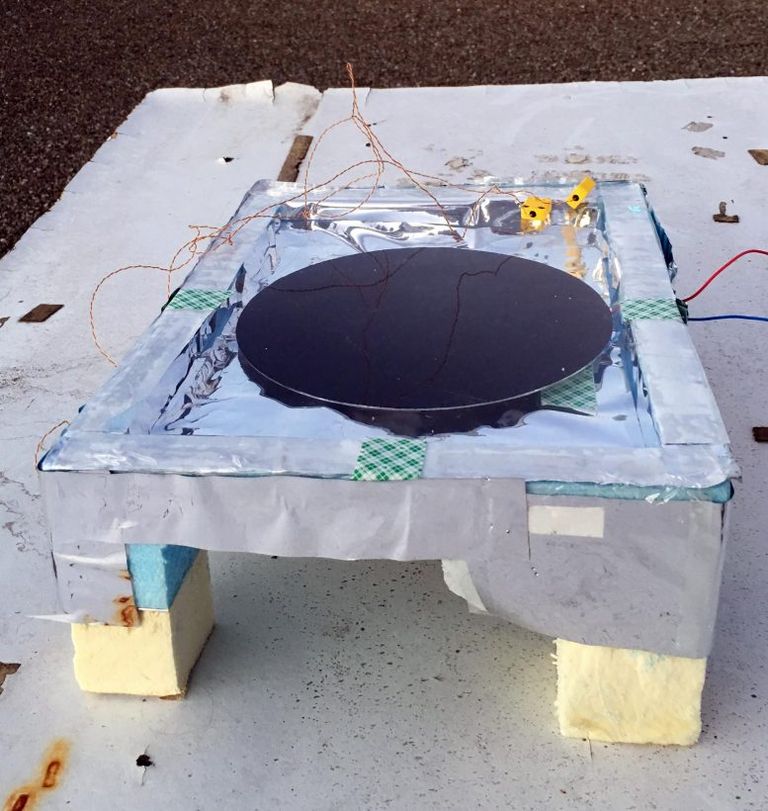Radiative Sky Cooling Could Be the Night Equivalent of Solar

The temperature of Earth’s surface is generally pretty stable, but it has to let heat off somehow. When heat waves rise off a sidewalk, for example, they dissipate into cooler air. That cooling process eventually reaches the upper atmosphere and then the cold, lifeless environs of space, in a process called radiative sky cooling. Scientists want to use the principles behind radiative sky cooling to create a low-cost energy source that could help people all over the world who lack stable electricity.
“This effect occurs naturally all the time, especially on clear nights,” says study author Aaswath Raman, an assistant professor of materials science and engineering at the UCLA Samueli School of Engineering, in a press statement. “The result is that the object ejecting the heat, whether it’s a car, the ground or a building, will be slightly cooler than the ambient temperature.”
Radiative sky cooling occurs wherever there’s a ground and a sky. A surface facing the sky will eventually eject some of its heat, and that rejection takes the form of thermal radiation.
The air of Earth’s atmosphere doesn’t have as stable a temperature as the ground. The UCLA team’s technology uses those temperatures differences to their advantage. It captures some of the heat from the surrounding air that would otherwise rise into the sky. That heat is then converted it into electricity.
To prove that their technology could provide renewable electricity at a low cost, the researchers built a proof-of-concept device using parts purchased at hardware and electronic supply stores. The total cost? Under $30.
Testing the system, the scientists used a rooftop in Stanford, California, in late December 2017 under clear-sky conditions. It was in the evening and it was cold, with temperatures hovering between -1 and -3 degrees Celsius during testing. Then, they brought out an aluminum disk painted black on one side, which faced the sky.
The team then used the black disk to radiate the heat being given off by the surrounding air. A thermoelectric generator, which produces electric voltage in response to a temperature difference, converted the heat into electricity.
The end result? The team generated 25 milliwatts per square meter, which could power a single LED light bulb. That’s less than a single solar cell, but the two need not work in opposition.
Solar panels work best during the day, and black disks work best at night. And with better equipment than what they bought off the shelf, the researchers estimate that it could generate 0.5 watts per square meter, approximately 20 times more than generated on the rooftop.
That would be enough to charge a smartphone, or a whole room filled with LED lights.
“We think this is an intriguing demonstration of how the cold of space can be accessed as a renewable energy resource and result in modest yet usable amounts of electricity,” Raman says. “We think it also could form the basis of a complementary technology to solar energy. While the power output will always be substantially lower than that of solar devices, this new technology can operate at hours when solar cells cannot.”
From: https://www.popularmechanics.com/technology/infrastructure/a29036147/radiative-sky-cooling/

